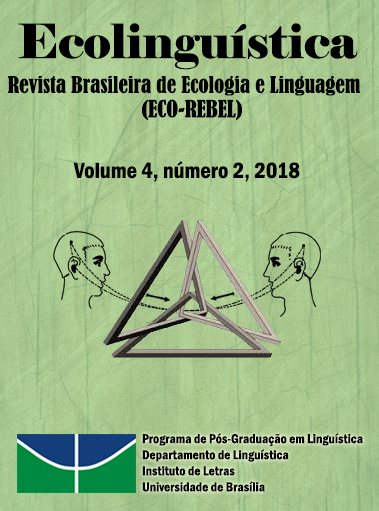The acceptance of virtual presentations at international conferences on education
Palabras clave:
Virtual presentations; climate change; international conferences; presentations via distance; environmental activism.Resumen
International academic conferences represent one manifestation of globalisation. At these conferences, academics come together to exchange ideas and experiences and to make contacts. Education is one of many academic fields on which a wide range of international conferences take place. Unfortunately, many people fly to such conferences, just contributing to climate change and other forms of ecological damage. This article focuses on the use of ICT for virtual presentations at these conferences, one way to enjoy the benefits of global interchange while lessening damage to the environment. Virtual presentations can be defined as presentations where the presenters do not attend the conference in person but instead do their presentations asynchronously or synchronously by electronic means. Thus, via virtual presentations, academics share and interact without travelling to the conference venue. This article has three parts. The first part explains ideas for doing virtual presentations. The second part of the article presents a study of conference organisers’ reactions to virtual presentations at international conferences on education. The third part discusses pros and cons of virtual presentations.
Descargas
Citas
ARDALAN, K. Globalization and information technology: Four paradigmatic views.Technology in Society,2011, 33(1), 59-72.
BARASH, D.Peace and conflict. Thousand Oaks, CA: Sage, 2002.Center for Teaching + Learning (n.d.). “Flipping” a class. Retrieved from http://ctl.utexas.edu/teaching/flipping-a-class
CLARK, D. Aviation Q&A: The impact of flying on the environment. The Guardian. Retrieved fromhttps://www.theguardian.com/environment/2010/apr/06/aviation-q-and-a(2010, April 6).
COUTO, H. H. do. Ecosystemic linguistics. In A. F. FILL& H. PENZ(Eds.), The Routledge handbook of Ecolinguistics. New York, NY: Routledge, 2018, p.149-161.
GEILING, A.Can eco-conscious passengers to anything to fly green? Smthsonian.com. Retrieved from http://www.smithsonianmag.com/travel/if-you-travel-and-care-about-environment-you-should-buy-carbon-offsets-180952222/?no-ist(2014, August 11).
GOOD, R. Best free video conferencing tools 2014.Retrieved from https://www.pinterest.com/robingood/best-free-video-conferencing-tools-2014, 2014.
IBÁÑEZ, M. B., GARCÃA RUEDA, J. J., MAROTO, D., & KLOOS, C. D. (2013). Collaborative learning in multi-user virtual environments.Journal of Network andComputer Applications36(6), 2013, p. 1566-1576.
JOHNSON, D. W., JOHNSON, R. T., & STANNE, M. B. Cooperative learning methods: A meta-analysis.Minneapolis, MN: University of Minnesota, 2000.
KYNDT, E., RAES, E.,LISMONT, B., TIMMERS, F., DOCHY, F., & CASCALLAR, E. A meta-analysis of the effects of face-to-face cooperative learning. Do recentstudies falsify or verify earlier findings? Educational Research Review 10, 2013, p. 133-149. doi:10.1016/j.edurev.2013.02.002
LINDAHL, R. A., OBAKI, S., & ZHANG,S. Curriculum Planning for a Globalized World.International Journal of Educational Reform12(2), 2003, p. 165-75.
RENANDYA, W. A. (2015). Teachers voices: Language teachers professional development group. Retrieved from https://www.facebook.com/groups/teachervoices.
SINGHAL M., & LIONTAS, J. (2004). Proceedings of the First International Online Conference of Second and Foreign Language Teaching and Research. Retrieved from http://www.readingmatrix.com/onlineconference/proceedings2004.html
SLAVIN, R. Synthesis of research on cooperative learning. Educational Leadership, 48(5), 1991, p. 71-82.
STIBBE, A. (2015). Ecolinguistics: Language, ecology, and the stories we live by. Abingdon, United Kingdom: Routledge.
TechSmith (2015). Camtasia. Retrieved from https://www.techsmith.com/camtasia.html
Descargas
Publicado
Cómo citar
Número
Sección
Licencia
Autores que publicam nesta revista concordam com os seguintes termos:
Autores mantêm os direitos autorais e concedem à revista o direito de primeira publicação, sendo o trabalho simultaneamente licenciado sob a Creative Commons Attribution License o que permite o compartilhamento do trabalho com reconhecimento da autoria do trabalho e publicação inicial nesta revista.
Autores têm autorização para assumir contratos adicionais separadamente, para distribuição não exclusiva da versão do trabalho publicada nesta revista (ex.: publicar em repositório institucional ou como capítulo de livro), com reconhecimento de autoria e publicação inicial nesta revista.
Autores têm permissão e são estimulados a publicar e distribuir seu trabalho online (ex.: em repositórios institucionais ou na sua página pessoal) a qualquer ponto antes ou durante o processo editorial, já que isso pode gerar alterações produtivas, bem como aumentar o impacto e a citação do trabalho publicado (Veja O Efeito do Acesso Livre).



3.png)



